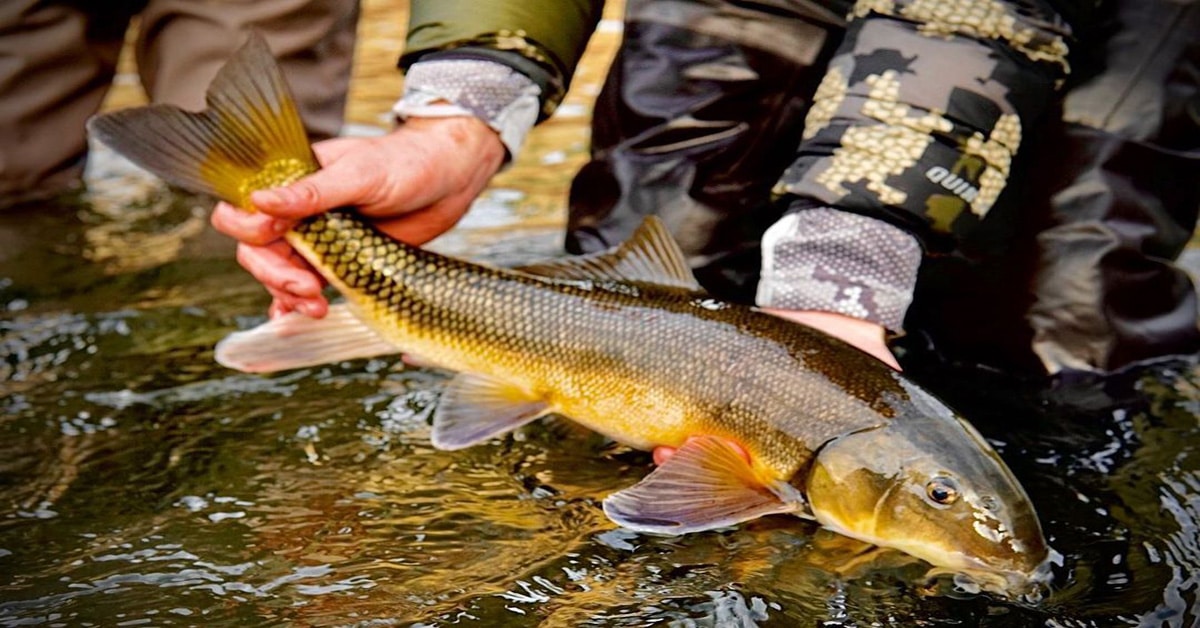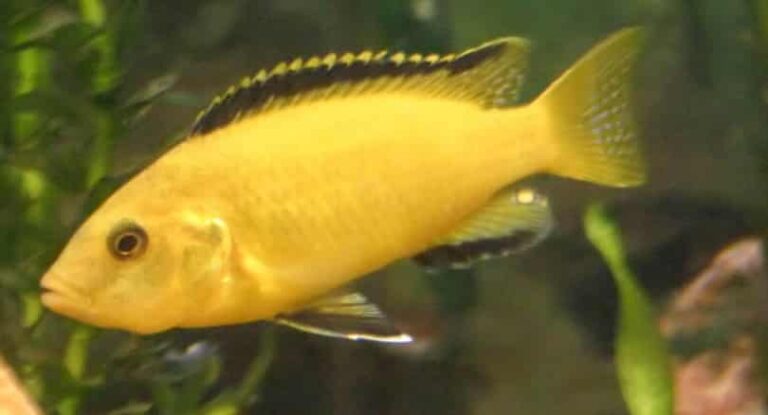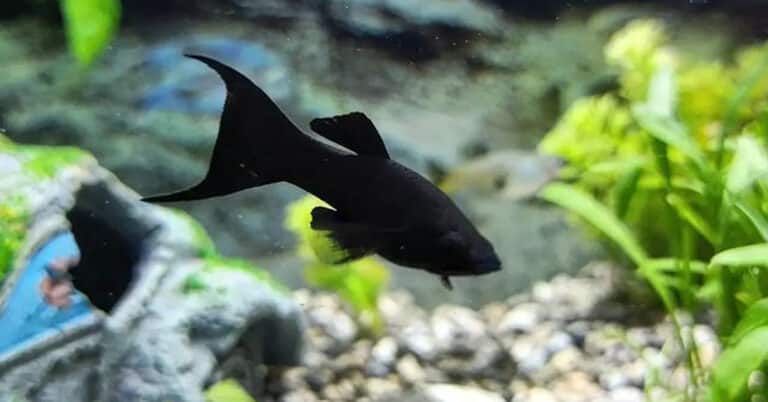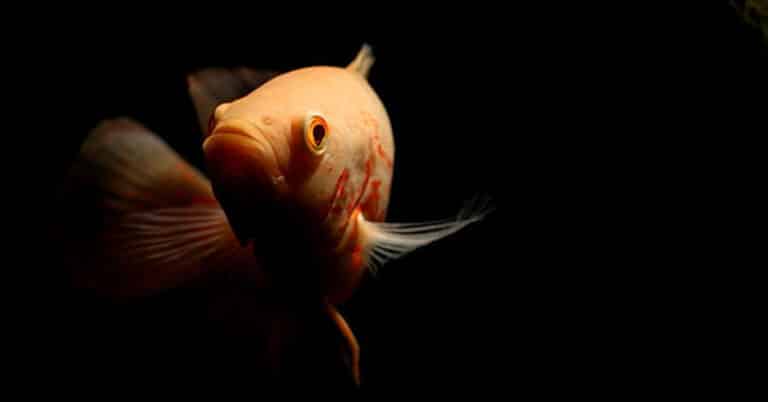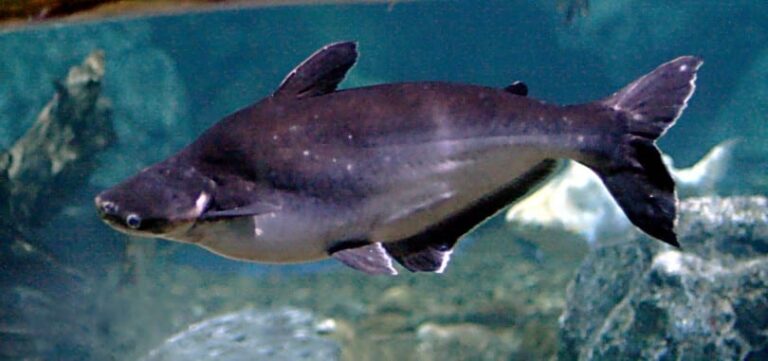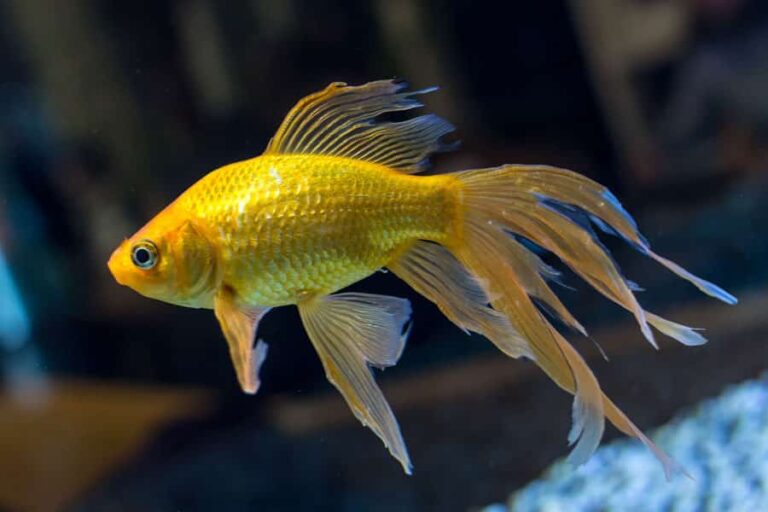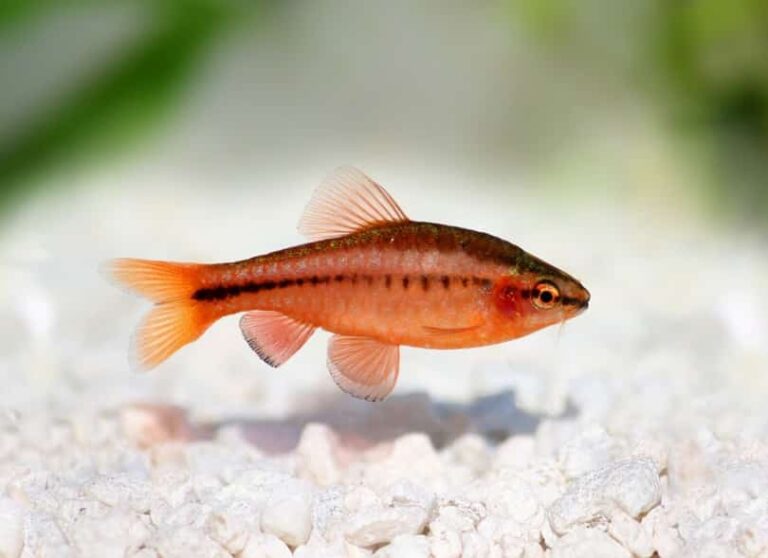Sucker Fish: Unique Features, Sociability & Factors Affecting Lifespan
Meet the sucker fish—an exceptional addition to your aquarium, combining beauty with a rich historical origin. Believe it or not, these remarkable creatures are thought to have appeared nearly 50 million years ago.
Beyond their ancient lineage, sucker fish play a vital role in aquarium ecosystems. They excel at keeping tanks free from algae and maintaining optimal water quality by eliminating floating food remnants.
In this article, we will explore the unique characteristics of the sucker fish, their lifespan, and how to ensure their well-being through suitable tank conditions and compatible tankmates. So, let’s start and find out everything you might be interested in!
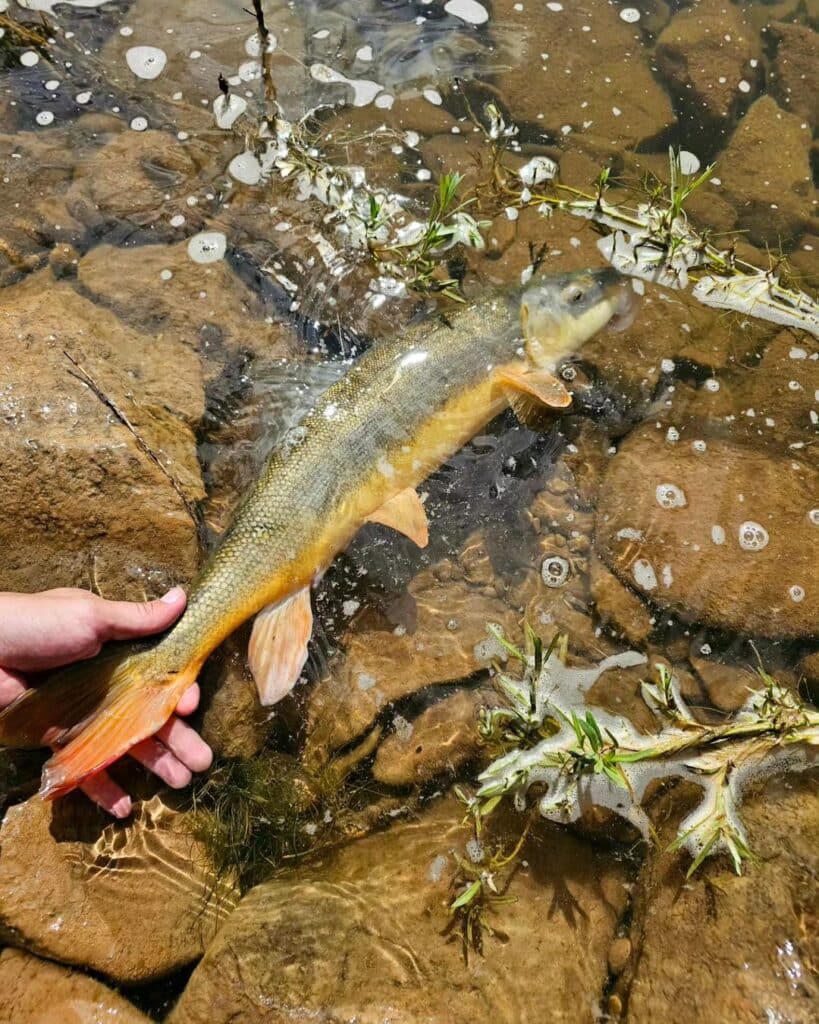
What is a Sucker Fish?
Sucker fish belong to a diverse group of freshwater fish, mainly known for their bottom-dwelling habits. They possess a specialized o-shaped mouth and come in various color combinations, including black, yellow, green, white, blue, orange, white, and gray.
Despite their status as bony fish, sucker fish have a rich history as a significant food source. They can be found not only in America but also in China.
Sucker fish are known to be nocturnal creatures, showing a preference for dimmer lighting conditions. If you wish to observe their daytime activities, it’s advisable to reduce the brightness of your aquarium lights. It’s worth noting that sucker fish may exhibit behavior such as nibbling on aquarium plants or creating hiding spots by digging trenches. To address this behavior, providing them with rocks or small cave-like structures can be beneficial.
Additionally, sucker fish are adept jumpers, so it’s essential to secure your aquarium with a lid to prevent any unintended escapes.
How Long Do Sucker Fish Live? 5 Factors to Consider
The typical lifespan of sucker fish can range from 10 to 20 years, influenced by factors like genetics and their environment.
Interestingly, there’s a freshwater fish known as the Bigmouth Buffalo, which holds the title of the longest-living freshwater fish on our planet. According to a study using carbon dating, one bigmouth buffalo fish was estimated to have lived a remarkable 112 years!
It may be difficult for your sucker fish to reach this impressive age, but why not try to set a new record? To achieve this goal, you should know about these 5 factors that significantly affect the lifespan of sucker fish.
1. Water Parameters
When it comes to taking care of sucker fish it’s important to ensure their well-being by meeting their specific requirements. For instance, sucker fish are technically considered tropical fish, so it’s best to keep their water warm, ideally within the range of 72 to 78 degrees Fahrenheit. To achieve this, you’ll need an aquarium heater and a thermometer to constantly monitor the temperature. Having water that’s either too hot or too cold can lead to unfortunate outcomes.
For a suckerfish, it’s essential to maintain a pH level between 6.5 and 7.5. This ensures their environment is suitable for their health and happiness.
2. Filtration
After regulating water parameters, maintaining a healthy environment for sucker fish is crucial due to their significant waste production. To achieve this, it’s essential to invest in a filtration system. For example, if you have a 50-gallon tank, opt for a filter capable of processing at least 200 to 250 gallons of water per hour. This ensures the entire tank gets filtered about 4 to 5 times hourly.
Additionally, it will be ideal if your filtration unit encompasses three stages: mechanical, biological, and chemical filtration. Regular cleaning and water changes are equally vital. While sucker fish are resilient, everyone agrees that no one enjoys swimming in dirty water.
So, staying diligent with filtration and cleaning is key. If you would like to maintain optimal water quality, we advise you to follow the golden rule and change 20% of water every 2 weeks.
3. Lighting Requirements
Sucker fish aren’t big fans of bright lights. They’re mainly active at night, which means they feed when it’s dark and their vision isn’t great during the day. So, having the perfect water temperature matters more than the lighting.
While it’s beneficial to have a suitable aquarium light for your fish, it doesn’t have to be excessively bright.
Here’s a helpful tip: If you’d like to watch your sucker fish eat during the day, consider dimming the lights a bit. This can encourage them to come out and eat more comfortably.
4. Substrate and Plants
Setting up a sucker fish tank requires careful consideration of substrate and plant choices. To create a suitable environment for your new aquatic companion, it’s essential to use at least 2.5 inches of aquarium sand as the substrate. Avoid aquarium gravel unless it’s exceptionally soft, fine, and smooth. Sucker fish tend to explore the bottom of the tank, often sliding their bellies along it, so sand is the ideal choice to prevent scratching and injuries.
When it comes to selecting plants, there are limited options due to sucker fish’s tendencies to uproot, eat, or damage plants. If you wish to include plants, ensure they are sturdy, well-rooted, and fast-growing. Sucker fish can be quite destructive, so most delicate plants won’t thrive in their presence.
However, leafy plants that provide hiding spots can be a good choice since sucker fish like to find places to relax and hide.
5. Decorations
When it comes to decorating your suckerfish tank, as we have already mentioned, it’s essential to provide ample hiding spots and areas for relaxation. Sucker fish tend to seek refuge from other fish and appreciate a well-decorated environment. Given their size, it’s important to choose decorations that match their needs.
Consider incorporating large pieces of hollow driftwood, rock caves, and castle-like structures with open interiors. Creating a balance between open areas and hiding spots will help keep your sucker fish happy and comfortable in their new tank.
What Do Sucker Fish Eat
Sucker fish primarily have a herbivorous diet, so it’s a good idea to provide them with some algae wafers, although shrimp pellets can also be suitable. sucker fish will certainly enjoy fresh foods like cucumber, lettuce, broccoli, zucchini, melon, and sweet potato.
These fish tend to feed at the bottom of the tank, so it’s crucial to ensure that the food you offer sinks to the bottom to make it accessible to them. Additionally, removing any excess food from the tank every morning is crucial to prevent it from rotting, decaying, and causing the water to become dirty.
When it comes to feeding frequency, it’s best to provide them with 2 meals a day. But don’t forget to be mindful not to overfeed. For this reason, we recommend offering a reasonable amount of food, and if there are uneaten leftovers, it’s a sign that you can reduce the portion size in the future.
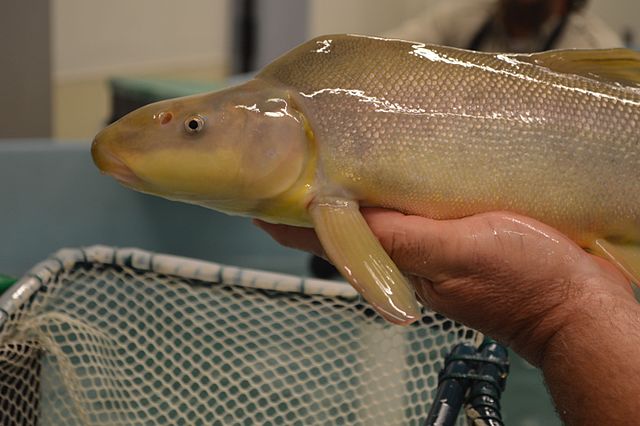
How Big Do Sucker Fish Get
If you have seen how tiny a sucker fish is in a store, you probably think that its future size cannot be large in any way. But, don’t be misled! Sucker fish have the potential to reach up to 12 inches in size.
Certain sucker fish species have even been known to occasionally grow as long as about 3 feet (1 meter). The biggest of them all is the bigmouth buffalo, which can tip the scales at a maximum of 79 pounds (36 kg). On the other hand, you have smaller sucker fish species like the blue sucker, which tend to have an average weight of 5.5 pounds.
Compatible Tank Mates for Sucker Fish
Sucker fish are generally known for their friendly and peaceful nature. In an aquarium, they can coexist harmoniously with a wide variety of fish species, except those of their kind. When placed in close quarters with fellow sucker fish, their territorial instincts can flare up and lead to intra-species conflicts.
However, if the tank becomes overcrowded, even these normally peaceful suckers can transform into aggressive bullies, directing their aggression toward other fish. Therefore, it’s advisable to avoid housing them with other burrowing fish to prevent such issues.
Another factor to consider is their physical strength. While suckerfish can be relatively large, they are not particularly robust, making them vulnerable when sharing a tank with larger and more aggressive fish. For the best tank-mate compatibility, it’s recommended to choose smaller and non-aggressive tropical fish that won’t pose a threat to your sucker fish.
Here is a list of suitable tank mates that can peacefully coexist with your friendly suckerfish. These compatible companions will help create a harmonious aquatic environment for your suckerfish to thrive in.
- Corydoras catfish
- Livebearers
- Peaceful barbs
- Tetras
- Danios
Final Thought
Considering your present degree of knowledge about sucker fish, you can easily decide whether or not you want to keep one in your aquarium. If you decide to go forward with sucker fish, you should also be aware that pet stores and fish stores have a range of sucker fish. On the other hand, some of the more rare species will be considerably simpler to find online.
Finally, to make sure your fish are healthy and the right kind, we advise only buying them from reputable breeders and sellers. So, good luck with your new aquatic adventure!

Nato is a content writer and researcher with a background in psychology who’s eager to explore the wonders of nature. As a travel enthusiast and animal lover, she hopes to inspire others to discover and cherish the beauty and importance of the natural world.

